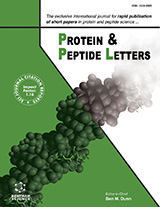Abstract
Background: Zika fever affects poor and vulnerable populations, presenting cycles observed in, at least 86 countries, with no vaccine prevention or treatment available. It is known that the genus Flavivirus causes Zika Virus (ZIKV), as Dengue and Yellow Fever, whose genetic material decodes, among other proteins, a series of non-structural (NS) proteins essential for viral replication, such as NS2B-NS3 protease. Additionally, chemical and biological systems are commonly studied using molecular modeling approaches allowing, among several other processes, to elucidate mechanisms of action, molecule reactivity and/or chemical properties and the design of new drugs. Thus, considering the in silico complexes between the biological target and the bioactive molecule, it is possible to understand better experimental results based on molecular properties, which are compared with the findings of the biological activity.
Objective: Accordingly, this study aimed to present computational docking simulations of five previously reported active peptides against NS2B-NS3 protease of ZIKV and analyze some quantum chemical properties to identify the main contribution to improving the action.
Methods: The compounds were described by Rut and coworkers (2017) and Hill and coworkers (2018), submitted to docking simulation in Gold software and quantum chemical properties calculations in Wavefunction Spartan software.
Results: Total energy, electrophilicity index (ω) and energy gap (GAP) appeared to be the best properties to justify the peptide's biological activity.
Moreover, the most promising compound (P1, Km 4.18 μM) had the best value of total energy (- 2763.04001 au), electrophilicity index (8.04 eV) and GAP (6.49 eV), indicating an energetically favorable molecule with good interaction with the target and, when compared to other peptides, presented moderate reactivity. P4 showed the highest electrophilicity index value (28.64 eV), which justified the interaction ability visualized in the docking simulation. However, its GAP value (4.24 eV) was the lowest in the series, suggesting high instability, possibly validating its low biological activity value (Km 19 uM). GAP was important to understand the chemical instability, and high values can promote damage to biological response.
Conclusion: Furthermore, it was also noted that high electron affinity, related to the electrophilicity index, promoted electron-accepting characteristics, which was important to improve the biological activity of the peptides. A larger compound series must be studied to access features more precisely. However, these results have paramount importance in guiding future effort in this extremely-need health area.
Keywords: quantum chemical properties, molecular modeling, active peptides, drug design, Zika virus.
Graphical Abstract
[http://dx.doi.org/10.1093/bmb/ldp046] [PMID: 24023397]
[http://dx.doi.org/10.1371/journal.pntd.0006559] [PMID: 29864133]
[http://dx.doi.org/10.1128/JVI.01469-17]
[http://dx.doi.org/10.1371/journal.pone.0170462] [PMID: 28125631]
[http://dx.doi.org/10.1080/13543776.2020.1811854]
[http://dx.doi.org/10.3389/fcimb.2017.00317] [PMID: 28748176]
[http://dx.doi.org/10.1186/s13071-018-2830-8] [PMID: 29690895]
[http://dx.doi.org/10.1038/ncomms13410] [PMID: 27845325]
[http://dx.doi.org/10.1371/journal.pone.0180632] [PMID: 28700665]
[http://dx.doi.org/10.1155/2013/875478]
[http://dx.doi.org/10.3390/molecules24091693] [PMID: 31052253]
[http://dx.doi.org/10.1038/aps.2012.109]
[http://dx.doi.org/10.1016/j.antiviral.2016.12.018] [PMID: 28034744]
[http://dx.doi.org/10.1021/acschembio.8b00508]
[http://dx.doi.org/10.1016/j.str.2017.06.006] [PMID: 28689970]
[http://dx.doi.org/10.1016/j.antiviral.2017.04.015] [PMID: 28461069]
[http://dx.doi.org/10.1002/jcc.20084] [PMID: 15264254]
[http://dx.doi.org/10.1002/prot.10465] [PMID: 12910460]
[http://dx.doi.org/10.1016/j.comptc.2015.01.014]
[http://dx.doi.org/10.1021/cr040109f] [PMID: 16771443]
[http://dx.doi.org/10.1021/cr990029p] [PMID: 12744694]
[http://dx.doi.org/10.1002/wcms.19]
[http://dx.doi.org/10.1371/journal.pone.0198476] [PMID: 29944674]
[http://dx.doi.org/10.1007/s11224-017-1029-5]
[http://dx.doi.org/10.1016/j.jksus.2020.101283] [PMID: 33432258]
[http://dx.doi.org/10.1039/B614208G] [PMID: 18197334]
[http://dx.doi.org/10.1016/j.cclet.2017.08.042]
[http://dx.doi.org/10.21577/0100-4042.20170474]
[http://dx.doi.org/10.3390/molecules19079354] [PMID: 24995921]
[http://dx.doi.org/10.1016/0166-1280(95)04312-8]
[http://dx.doi.org/10.15386/cjmed-610] [PMID: 27857521]
[http://dx.doi.org/10.3389/fmars.2014.00031]
[http://dx.doi.org/10.33945/SAMI/PCBR.2019.2.4]
[http://dx.doi.org/10.1007/s00894-018-3868-4] [PMID: 30413890]
[http://dx.doi.org/10.26717/BJSTR.2018.09.001852]
[http://dx.doi.org/10.1098/rsfs.2017.0030]
[http://dx.doi.org/10.3892/etm.2018.5821]
[http://dx.doi.org/10.1371/journal.pone.0117849] [PMID: 25719412]
[http://dx.doi.org/10.1016/j.jscs.2011.09.011]
[http://dx.doi.org/10.21577/0103-5053.20170146]
[http://dx.doi.org/10.1016/j.heliyon.2019.e01809] [PMID: 31194050]










